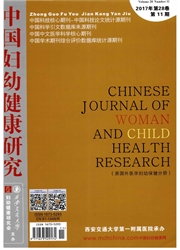

 中文摘要:
中文摘要:
该文综述了近年来妇女性传播疾病的发病状况及流行病学特征,其发病特点是性从业者为性传播疾病的高危群体。一般群体中,农村人口集中的西部地区性传播疾病的发病率呈上升趋势,农民工的流动性增大了西部农村妇女感染性传播疾病的几率。有些疾病则难以治愈,甚至产生耐药,如淋球菌的感染即属于此类。国外难治性淋球菌感染的报道资料较多,西欧地区12个国家首次淋球菌联合抗生素敏感性检测及德国、日本等国家和城市均有报道,但目前有的疾病甚至无治愈手段,如艾滋病。因此,研究者从阻断性传播疾病传播环节的预防方面提出设想并进行试验,并从生物、心理、社会三方面考虑出发,提出了妇女性传播疾病的综合防治干预思路。
 英文摘要:
英文摘要:
The paper reviewed prevalence and epidemiological characteristics of sexually transmitted diseases (STDs) among rural women in recent years. Sexual practitioners are the most dangerous population of STDs, the prevalence rate of STDs shows an increasing trend in western China where rural population are centralized and urban migrant farmers increase probability of STDs' infection of rural women. Some STDs can be cured such as trichomoniasis vaginitis and fungal vaginitis; some STDs are hard to cure and even are drug-resistant such as gonococcal infection. There are many reports on gonococcal infection in abroad such as The First combined Antimicrobial Susceptability Data for Neisseria Gonorrhoeae in 12 Western European Countries as well as reports from Germany and Japan; some STDs could not be cured yet at present such as AIDS. Finally, the researchers proposed presumptions and conducted experiments from prevention aspects of blocking STDs' spread route and put forward synthetic intervention, prevention and treatment thought from biological, psychological and social angles.
 同期刊论文项目
同期刊论文项目
 同项目期刊论文
同项目期刊论文
 期刊信息
期刊信息
